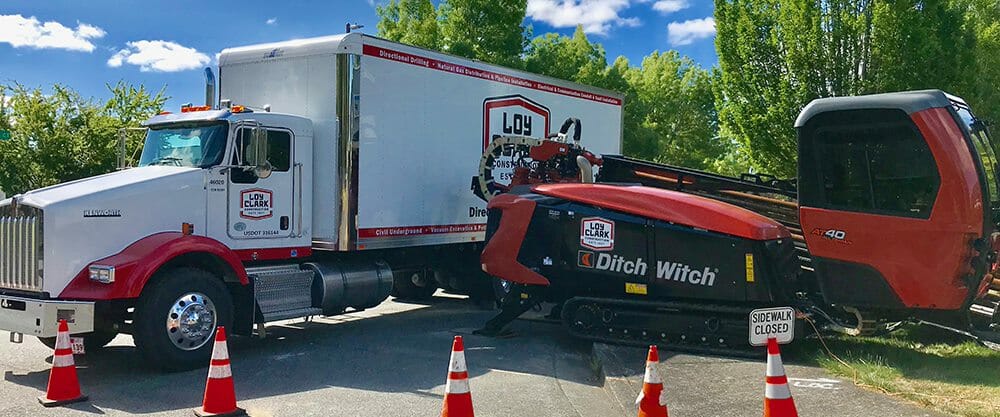Directional boring has transformed the field of subsurface exploration and utility deployment, progressing remarkably over the past few decades. As Horizontal Directional Drilling Dublin Ireland like the oil and gas sector, public utilities, and renewable energy persist in innovation, comprehending the nuances of this boring method grows more vital. For those newcomers, directional drilling enables operators to drill down and then direct the drill bit horizontally, creating boreholes that maneuver through complex underground environments with exactness. This technique enhances resource extraction but also addresses challenges such as eco-friendliness and urban infrastructure needs.
In this article, we will explore the evolution of directional drilling technology, analyze its diverse applications, and examine the technical aspects that establish it as a leading choice across various industries. We will showcase the merits it provides over conventional drilling techniques, including less surface disturbance and reduced costs, while uncovering the crucial role it occupies in advancing sustainable practices. Whether you are a seasoned professional or new to this area, our thorough guide aims to provide a more profound insight of directional drilling and its importance in the swiftly changing environment of today.
Comprehending Angled Boring
Navigational boring is a process that enables for the drilling of wells at various angles rather than just only vertical down. This cutting-edge technique allows workers to reach designated reservoirs that may be located far away from the upright borehole. By changing the inclination and direction of the drill bit, directional drilling can tap into oil and gas deposits, implement utilities, or establish pathways for pipelines without needing to penetrate directly on top of the target point.
The core principle behind navigational boring is to utilize sophisticated techniques that enable for precise control over the drill path. Equipment such as mud motors and specialized drill bits facilitate the navigation of the drill as it rises, descends, or bends laterally. Additionally, continuous observation of the drilling process with bore tracking systems guarantees that operators stay on track, enhancing effectiveness and lowering the risk of expensive blunders.
This technique has revolutionized numerous industries by enabling projects in locations that would be difficult or impossible with standard upright drilling techniques. Whether it's reaching resources beneath metropolitan structures or reducing ground disturbance in fragile areas, navigational drilling has grown to be essential in contemporary construction and retrieval. As the field advances, so do the methods and strategies, increasingly improving the capabilities of angled drilling.
Benefits and Applications
Directional drilling offers many benefits over traditional drilling methods, primarily through its ability to reduce ground disturbance. By drilling at various angles, operators can reach targeted locations without the need for significant land clearing, preserving the surrounding ecosystem. This technique is highly advantageous in urban settings where land is scarce and existing infrastructure must be preserved. As a result, directional drilling helps maintain the surroundings while allowing for effective material retrieval and utility installations.
The applications of directional drilling extend beyond oil and gas extraction. It plays a vital part in the utility installation sector, enabling the efficient placement of aquatic, sewer, and telecommunications lines. This technology facilitates under-road and under-river installations, eliminating the necessity of invasive surface digging. Additionally, directional drilling is becoming ever more crucial for renewable energy projects, like geothermal and wind energy, where accurate boring methods are necessary to maximize energy efficiency and reduce environmental harm.
As the need for green and efficient infrastructure grows, the benefits of directional drilling become more apparent. Its ability to lessen the ecological impact of drilling operations makes it an ideal choice for fragile areas, such as wetlands and densely populated areas. Furthermore, the cost efficiencies associated with directional drilling, combined with its technological innovations and monitoring systems, position it as a key tool in future construction and energy projects. The continuous development of directional drilling techniques will shape the future of utility management and resource management for an extended period of time.

Emerging Advancements in Horizontal Drilling
The prospects of directional drilling is poised for major advancements driven by new technologies. AI and machine learning are becoming essential to enhancing drilling operations, enabling better estimates of drill path and lessening the risk of financial errors. By analyzing vast amounts of information in actual time, these technologies can enhance the effectiveness of drilling processes and heighten decision-making, leading to more secure and optimized operations.
In addition to AI, the incorporation of advanced devices and software systems is changing how directional drilling projects are administered. These tools enable live bore tracking and monitoring, allowing engineers to assess performance metrics and environmental impacts more accurately. The ongoing advancement of these systems will probably lead to increased precision in drilling techniques, which is especially crucial in urban environments where space is scarce and the stakes are elevated.
As the industry shifts towards sustainability, there is a rising emphasis on directional drilling as a means to support sustainable infrastructure projects. Breakthroughs in drilling fluids, waste reduction practices, and energy-efficient drilling techniques are becoming more widespread. The focus on lessening the ecological impact of drilling activities correlates with global sustainability goals, making directional drilling not just a practical choice and also a crucial component of next-generation infrastructure development.
